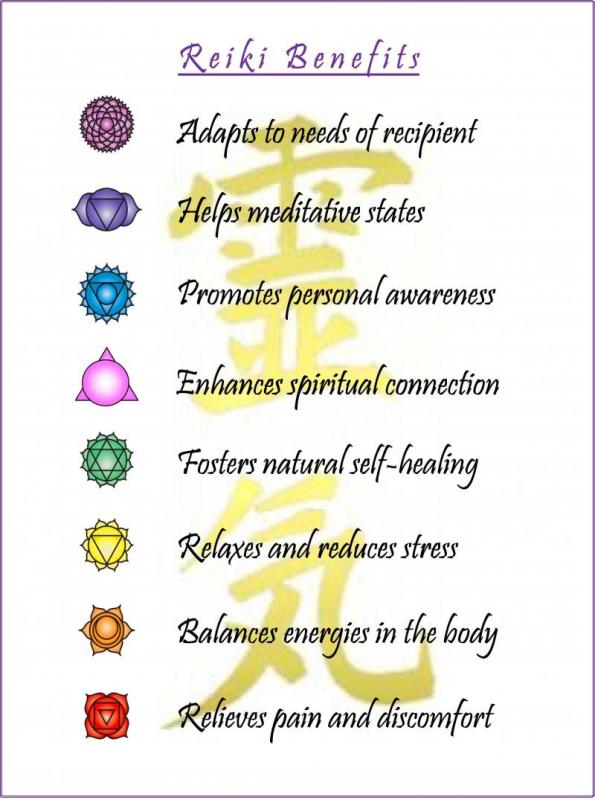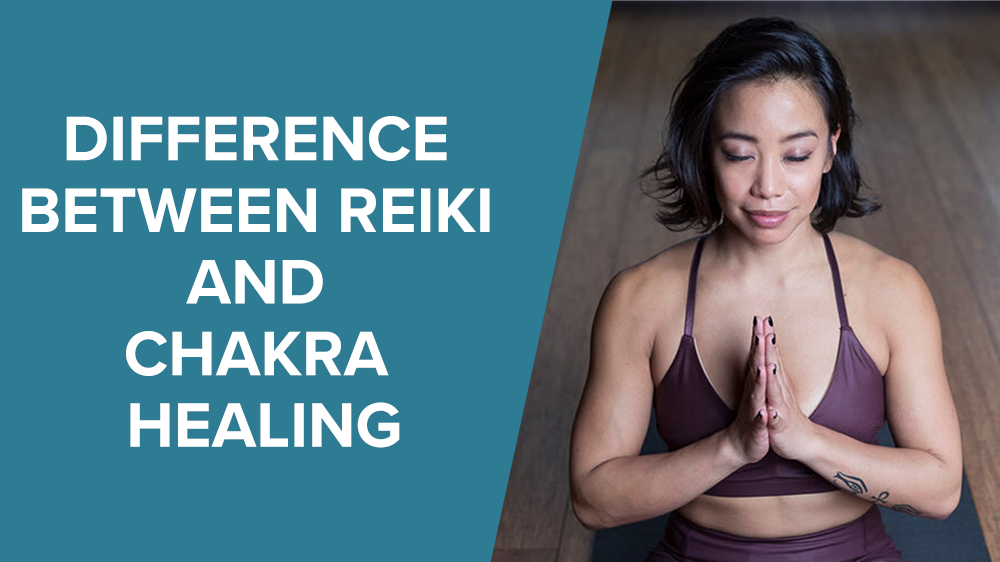In the fascinating realm of energy healing, two popular modalities often come to the forefront: Reiki and chakra healing. Both practices involve working with the body’s energy system to promote healing and balance, but their techniques and approaches vary greatly. While Reiki focuses on channeling universal life force energy through the hands, chakra healing centers around balancing and aligning the body’s energy centers, known as chakras. Join us as we explore the key distinctions between these two powerful healing methods and discover how each can support your overall well-being.
Overview of Reiki
Reiki as a healing technique
Reiki is a gentle, non-invasive healing technique that originated in Japan. The word “Reiki” is derived from the Japanese words “rei,” meaning universal, and “ki,” meaning life force energy. It is based on the belief that there is a life force energy that flows through all living beings, and when this energy is blocked or imbalanced, it can lead to physical, emotional, and spiritual ailments. Reiki practitioners use their hands to channel this universal life force energy into the recipient, promoting healing and restoring balance on all levels.
Origin and principles of Reiki
Reiki was developed in the early 20th century by Mikao Usui, a Japanese Buddhist monk. Usui discovered the healing power of energy while on a spiritual retreat and developed a system of techniques and principles to harness and direct this energy for healing purposes. The principles of Reiki, also known as the Five Reiki Principles or the Five Reiki Precepts, serve as a guiding philosophy for practitioners. They include concepts such as “Just for today, do not anger” and “Just for today, be grateful,” emphasizing the importance of maintaining a positive mindset and living in the present moment.
Overview of Chakra Healing
What are chakras?
Chakras are energetic centers within the body that correspond to different aspects of our physical, emotional, and spiritual well-being. Derived from the Sanskrit word for “wheel,” chakras can be imagined as spinning wheels of energy located along the spine. There are seven main chakras, each associated with a specific color, sound, and aspect of our being. These chakras are believed to be interconnected and influence one another, and when they are balanced and flowing harmoniously, we experience optimal health and vitality.
Importance of balancing chakras
Balancing the chakras is essential for maintaining overall well-being. When a chakra is imbalanced or blocked, it can manifest as physical, emotional, or mental discomfort. By bringing each chakra into a state of balance, we can release stagnant energy, alleviate symptoms, and promote the optimal flow of life force energy throughout the body. Chakra healing techniques, such as meditation and crystal therapy, help to restore the harmonious functioning of the chakras, leading to improved physical health, emotional stability, and spiritual growth.
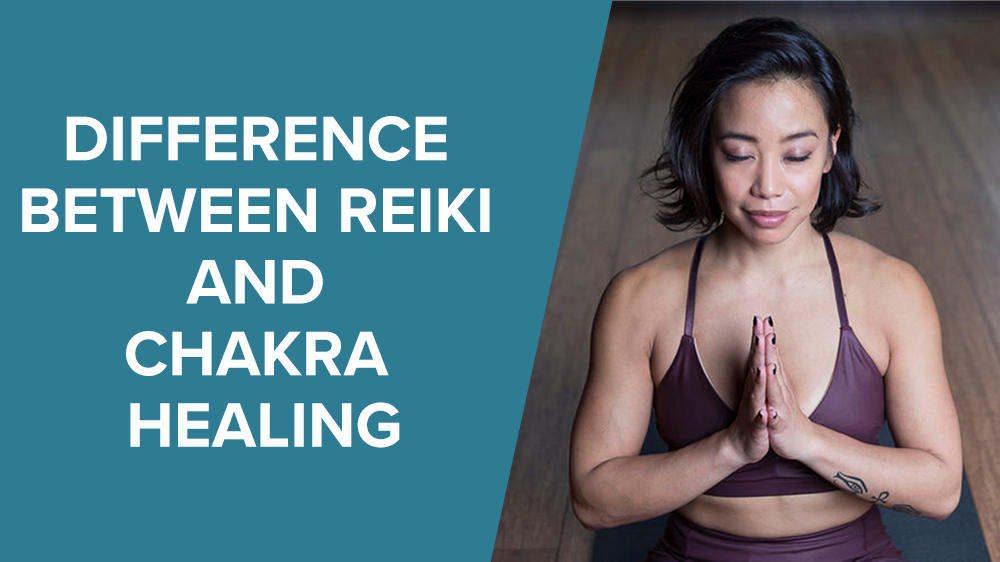
Techniques used in Reiki
Palm healing
Palm healing, also known as hands-on healing, is one of the primary techniques used in Reiki. During a palm healing session, the practitioner places their hands lightly on or just above the recipient’s body, allowing the universal life force energy to flow through them and into the recipient. The practitioner acts as a channel for this energy, directing it to areas where it is needed most. Palm healing is a gentle and soothing technique that promotes relaxation, reduces pain and inflammation, and supports the body’s natural healing processes.
Distance healing
In addition to palm healing, Reiki also encompasses distance healing. This technique allows Reiki practitioners to send healing energy across time and space to individuals who are not physically present. Through focused intention and visualization, the practitioner connects with the recipient’s energy field and channels Reiki to them. Distance healing can be just as effective as in-person sessions and is beneficial for those who are unable to attend physical sessions or prefer the comfort of their own surroundings.
Reiki symbols and mantras
Reiki is further enriched by the use of symbols and mantras, which serve as powerful tools to enhance the flow and effectiveness of the healing energy. Reiki symbols are sacred symbols that represent different aspects of healing and transformation. They can be visualized, drawn, or spoken to invoke their specific qualities and energies. Reiki mantras, on the other hand, are sacred sounds or phrases that are repeated silently or aloud to deepen the connection with the universal life force energy and facilitate healing. These symbols and mantras are taught and passed down through generations of Reiki practitioners.
Techniques used in Chakra Healing
Chakra meditation
Chakra meditation is a powerful technique used in chakra healing to bring awareness and balance to the chakras. During a chakra meditation, the practitioner focuses their attention on each individual chakra, visualizing its corresponding color and repeating its associated mantra. This practice helps to activate and cleanse the chakras, release any blockages or imbalances, and restore their optimal functioning. Chakra meditation can be practiced individually or guided by a meditation teacher, and it is a wonderful way to deepen one’s self-awareness and promote a sense of inner peace.
Chakra crystals
Crystals are commonly used in chakra healing to support the balance and alignment of the chakras. Each chakra is associated with specific crystals that resonate with its unique energy. By placing or wearing these crystals on or near the corresponding chakra, their vibrations interact with the chakra’s energy, promoting healing and restoring harmony. Clear quartz, amethyst, rose quartz, and citrine are just a few examples of crystals commonly used in chakra healing. Each crystal has its own unique properties that contribute to the overall balancing and healing process.
Breathing exercises
Breathing exercises play a vital role in chakra healing as they help to regulate the flow of energy and promote relaxation. Deep, slow breathing calms the nervous system, reduces stress, and brings focus and awareness to the present moment. Certain breathwork techniques can specifically target and balance individual chakras. For example, abdominal breathing can activate and energize the lower chakras, while gentle and slow breathing can soothe and harmonize the higher chakras. Incorporating breathwork into your chakra healing practice can enhance its effectiveness and provide a deep sense of grounding and tranquility.
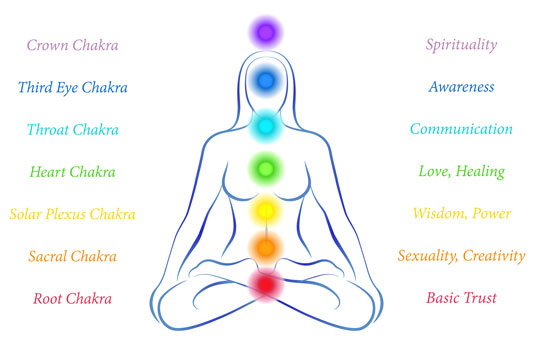
Approach in Reiki
Energy channeling and balancing
The primary approach in Reiki is centered around channeling and balancing the universal life force energy. Reiki practitioners act as conduits for this energy, facilitating its flow into the recipient’s body and energy field. By restoring the balance and flow of energy, Reiki helps to activate the body’s natural healing mechanisms and promote physical, emotional, and spiritual well-being. The practitioner’s hands serve as a pathway for the energy to flow, and they intuitively move their hands to areas of the body that require healing or attention.
Transferring universal life force
Another key aspect of the Reiki approach is the transfer of universal life force energy from the practitioner to the recipient. The practitioner gently places their hands on or above the recipient’s body, allowing the energy to flow through them. This transfer of energy serves to replenish and align the recipient’s energy field, boosting their vitality and promoting self-healing. Unlike other healing modalities that rely on the practitioner’s energy, Reiki draws its power from the limitless universal life force energy, making it a deeply transformative and rejuvenating practice.
Focus on the entire body
Reiki takes a holistic approach to healing, recognizing that the mind, body, and spirit are interconnected and influence one another. Therefore, practitioners focus on treating the entire body, rather than isolated symptoms or specific areas. By addressing the underlying energetic imbalances in the body, Reiki supports comprehensive healing and promotes overall well-being. While specific concerns or ailments may be discussed, the overall goal of Reiki sessions is to restore balance on all levels and cultivate a state of deep relaxation and harmony.
Approach in Chakra Healing
Specific focus on individual chakras
In contrast to Reiki’s emphasis on the entire body, chakra healing takes a more targeted approach by focusing on individual chakras and their corresponding energy centers. Chakra healing recognizes that each chakra relates to specific aspects of our physical, emotional, and spiritual well-being, and imbalances in these energy centers can manifest as specific symptoms or issues. Chakra healing techniques aim to assess, balance, and align each chakra to promote optimal functioning and overall well-being.
Identifying and removing blockages
A significant part of chakra healing is the identification and removal of blockages within the chakras. Blockages can occur as a result of physical, emotional, or mental stress, and they inhibit the free flow of energy through the chakras. Chakra healers use various methods, such as intuitive assessment, energy scanning, or pendulum dowsing, to identify areas of blockage or energetic congestion. Once identified, these blockages can be released and cleared through various chakra healing techniques, allowing for the restoration of energy flow and balance.
Using color therapy
Chakra healing often incorporates the use of color therapy to support the balancing and healing of the chakras. Each chakra is associated with a specific color, and exposing oneself to these colors can help to activate and harmonize the corresponding chakra. Color therapy can take several forms, such as visualizing or surrounding oneself with the specific colors, using colored light therapy, or incorporating specific-colored clothing or decor. By utilizing the vibrational frequencies of colors, chakra healing harnesses their therapeutic benefits for the optimal functioning of the energy centers.
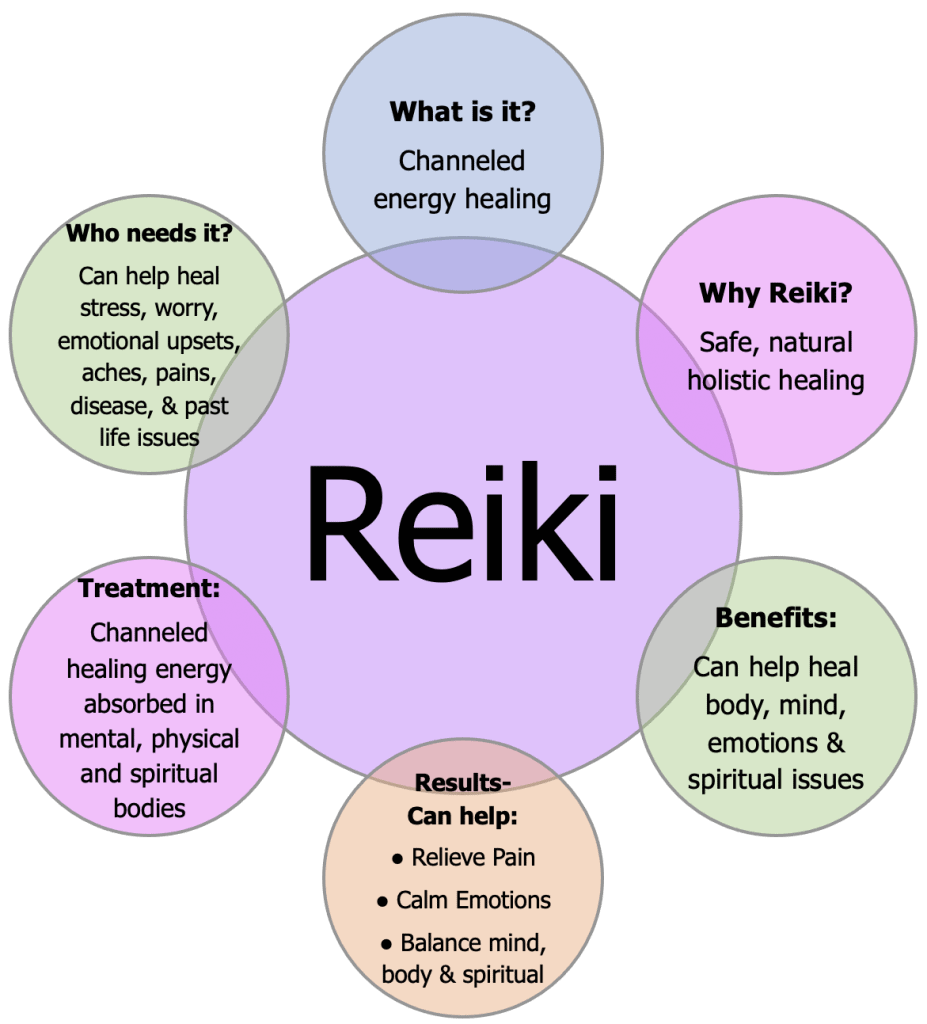
Benefits of Reiki
Promotes relaxation and stress reduction
Reiki is renowned for its ability to induce deep relaxation and reduce stress. During a Reiki session, the gentle touch and the flow of healing energy provide a soothing and calming experience, allowing the recipient to release tension and attain a state of profound relaxation. This relaxation response helps to lower cortisol levels, improve sleep quality, and promote overall mental and physical relaxation.
Supports emotional and spiritual healing
In addition to its physical benefits, Reiki also supports emotional and spiritual healing. The gentle energy flow during a Reiki session can help to release emotional blockages and promote emotional well-being. Many people report feeling a sense of peace, clarity, and liberation after a Reiki session, as unresolved emotions are gently processed and released. Reiki can also enhance spiritual growth and connection by bringing awareness to the deeper aspects of oneself and fostering a sense of inner peace and harmony.
Enhances overall well-being
Reiki is a holistic healing modality that promotes overall well-being. When the energy flow is balanced and harmonious, the body, mind, and spirit operate optimally. Regular Reiki sessions can support the body’s natural healing ability, strengthen the immune system, and enhance vitality and energy levels. Furthermore, Reiki sessions provide a space for relaxation, self-care, and introspection, nurturing a sense of well-being and inner balance.
Benefits of Chakra Healing
Restores energy flow and balance
The main goal of chakra healing is to restore the balance and optimal energy flow within the chakras. By addressing blockages, excesses, or deficiencies within the chakras, energy can flow freely throughout the body, promoting physical and emotional well-being. Chakra healing facilitates the release of stagnant energy and supports the body’s self-healing mechanisms, leading to improved energy levels, vitality, and overall health.
Improves physical and mental health
Chakra healing has a profound impact on physical and mental health. By balancing and aligning the chakras, it promotes proper functioning of the organs and systems associated with each chakra. This improvement in energy flow can alleviate physical symptoms, enhance the body’s ability to heal, and promote overall wellness. Chakra healing also has a positive effect on mental health, as it helps to release negative emotions, reduce stress and anxiety, and foster a sense of mental clarity and well-being.
Deepens connection with oneself
Chakra healing is a deeply introspective practice that encourages self-exploration and self-awareness. By working on the chakras, individuals gain insight into their energetic patterns, emotional imbalances, and spiritual blocks. This deeper connection with oneself enables personal growth, fosters self-acceptance and self-love, and facilitates the development of a stronger sense of purpose and fulfillment in life. Chakra healing provides a pathway for individuals to connect with their inner wisdom and authentic selves.
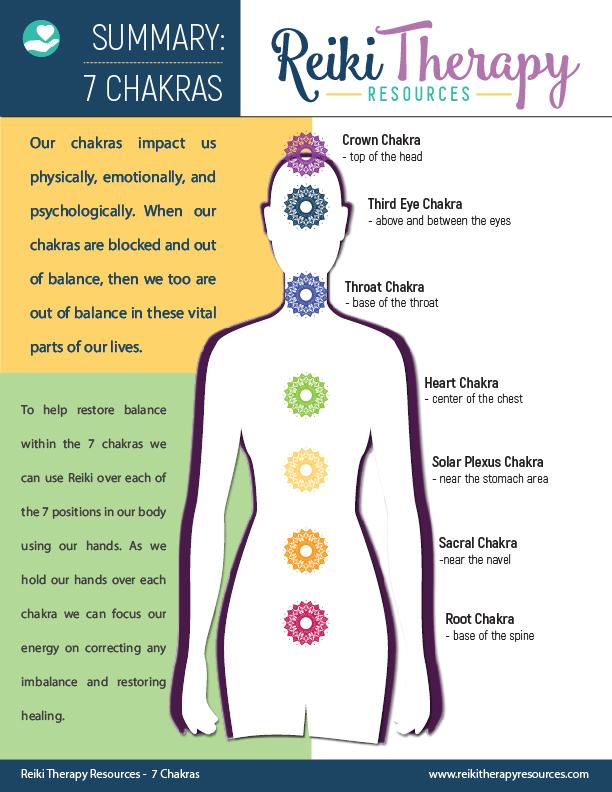
Training and Certification in Reiki
Different levels of Reiki training
Reiki training is typically divided into different levels or degrees, each building upon the previous one. The first level, often called Reiki Level 1 or Reiki I, introduces students to the basic principles and techniques of Reiki. At this level, individuals learn to perform hands-on healing, self-healing, and how to work with energy. Reiki Level 2, or Reiki II, expands on the foundational knowledge and introduces symbols and mantras that can enhance the healing energy. Reiki Master and Teacher training is the highest level of Reiki training, allowing individuals to attune others to Reiki and teach Reiki classes.
Attunements and initiation processes
At each level of Reiki training, initiations or attunements are performed to create a deep connection between the practitioner and the Reiki energy. Initiation ceremonies involve the Reiki Master or teacher transmitting the Reiki energy to the student through a specific ritual or ceremony. These attunements raise the practitioner’s energetic vibration and open them up to receive and channel the Reiki energy more effectively. Attunements are considered sacred and transformative experiences that deepen the practitioner’s connection with Reiki.
Certification and ongoing education
After completing Reiki training, individuals may choose to pursue certification to authenticate their skills and knowledge. Certification is not a legal requirement for practicing Reiki, as it is primarily an energetic healing technique. However, it serves as a demonstration of dedication and expertise in the field. Many Reiki organizations and associations offer certification programs that require the completion of specific training hours and demonstration of competency. To continue learning and deepening their practice, Reiki practitioners often engage in ongoing education by attending workshops, seminars, and retreats led by experienced teachers.
Training and Certification in Chakra Healing
Chakra healing workshops and courses
Chakra healing workshops and courses provide comprehensive training in the field of chakra healing. These programs cover various aspects of chakra healing, including assessment, cleansing, and balancing techniques. Participants learn how to work with each individual chakra, identify blockages, and use different healing modalities to restore balance and harmony. Chakra healing workshops and courses are offered by experienced practitioners and teachers, providing both theoretical knowledge and practical skills.
Various modalities and techniques
Chakra healing encompasses a wide range of modalities and techniques, and training programs often introduce participants to a variety of approaches. These may include chakra meditation, crystal healing, sound therapy, aromatherapy, energy healing, and more. Participants gain a comprehensive understanding of the different tools available for chakra healing, and they learn how to combine or adapt techniques to suit individual needs. This training equips individuals with a diverse toolkit to effectively address various aspects of the chakras and offer tailored healing experiences.
Certification and continuing education
Similar to Reiki training, certification in chakra healing is an optional but valuable addition to one’s credentials. Certification programs provide a structured curriculum and assessment criteria to ensure that individuals meet certain standards of knowledge and proficiency in chakra healing. By completing a certification program, individuals demonstrate their competence in this specific modality and gain recognition within the field. Continuing education is also an important aspect of chakra healing training, as it allows practitioners to stay updated on new techniques, research, and advancements in the field. Workshops, conferences, and online courses offer opportunities for ongoing education and development.
In conclusion, Reiki and chakra healing are both holistic healing modalities that aim to restore balance and promote well-being. While Reiki focuses on channeling universal life force energy to bring overall harmony and relaxation to the recipient, chakra healing targets individual energy centers to restore optimal function and balance. Reiki uses techniques such as palm healing and distance healing, while chakra healing utilizes practices like chakra meditation and crystal therapy. Both approaches offer numerous benefits, from physical healing to emotional and spiritual growth. Training and certification programs are available for those interested in becoming practitioners in either modality, allowing individuals to deepen their understanding and practice of these transformative healing arts.
